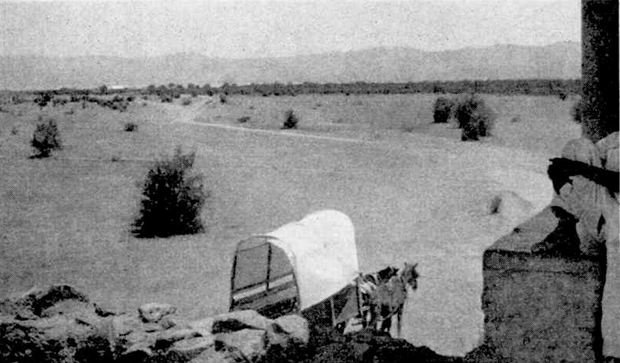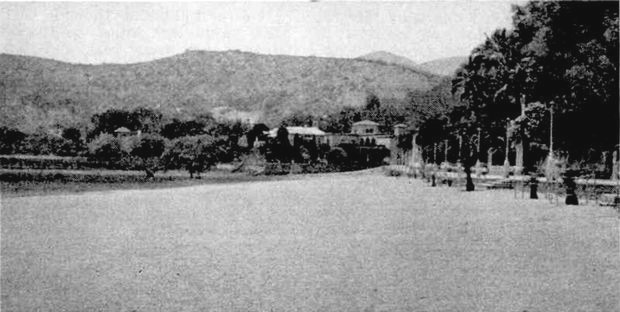Emil Zubryn was born on 11 July 1909 in Brooklyn, New York, to Nicholas Zubryn (30) and his wife Mary (29), newly arrived immigrants from Austria. His father worked as a building maintenance employee of the New York Telephone Company. Emil’s parents later lived for 12 years in Phoenix, Arizona, before spending their final years in Tulsa, Oklahoma, where Mary died in 1958 and Nicholas the following year.
Emil Zubryn graduated from the Brooklyn Evening High School for Boys in June 1929. Even before leaving school he had revealed a glimpse of his precocious writing talent and signaled his intent to write for a living, as is evident in a short love poem, titled “The Poet to His Love,” he wrote for The Wichita Eagle:
My sun, my moon, my stars, my all,
My light of love divine!
I would that I might sing thy praise-
At fifty cents a line!
In his final year at High School, Zubryn wrote “The Enterprising Author” for Writer’s Digest, and he never looked back. Zubryn began his journalistic career in New York before enlisting in 1942 in the U.S. military. The following year he was discharged (for disability) following a month in hospital for hypertensive cardiovascular disease.

“The gentle swells of Lake Chapala reached the wall and rocks seen here. Now only the lake bottom is visible as far as the eye can see, and this is steadily getting drier and dustier.” (The Meccano Magazine, December 1956). Photo dates from 1955.
In the mid-1940s, Zubryn was named in The New York Times as the editor of The Free Lance Weekly, a new publication, “devoted to market news for writers, photographers, artists and cartoonists.” At about the same time, it was reported in the U.K. that he was collaborating with British writer Kenneth C. Betteridge to present English plays for American radio audiences.
For motives unknown, Zubryn relocated to central Mexico in the late 1940s or very early 1950s, from where he pursued his writing career as a freelancer based in the city of Cuernavaca. He reported on a wide variety of Mexico-related topics and sold stories and short articles to English-language publications in the U.S. and elsewhere.
Zubryn developed a knack for recognizing and following up on newsworthy topics, often anticipating trends that had not yet caught the eye of other mainstream journalists. For example, in the 1950s he wrote “Phony Spirits Dupe Tourists in Mexico,” which brought attention to the issue of illicitly distilled drinks in Mexico, and “Mexico Can Be a Gourmet’s Delight,” in which he wrote that, “In the past year or so the Mexican kitchen has attained its deserved status as a gourmet’s delight.” It would take several decades for that to become a mainstream viewpoint.
Illustrating his short piece, titled “A Shrinking Lake. Doom of an Inland Sea in Mexico,” published by UK-based The Meccano Magazine in December 1956, were two photographs (probably taken by Zubryn) which showed the wide expanse of former lakebed then exposed to the elements. Ironically, on this occasion, Zubryn was behind the times!

“Where the water of the lake came right up to the improvised boardwalk seen on the right in the picture, now there is a walk of hundreds of yards to reach it.” (The Meccano Magazine, December 1956). Photo dates from 1955.
It is true that a year earlier (1955) the level of Lake Chapala had fallen to a record low by 4 June. But it had then risen an amazing 3.4 meters (11.2 feet) by late-November, more or less back to its twentieth century norm. While the lake fell about a meter during 1955-56 dry season, it rebounded after the 1956 summer rainy season to an even higher level than a year earlier. By December 1956, when Zubryn’s article was published, the lake was back to ‘normal’ and looked nothing like the photographs. Clearly, both photographs must date from the first half of 1955. Unfortunately, the time spent in writing the article, and its submission, acceptance, editing and revision, meant that the photographs were totally out of date before they were printed.
However, the photographs do have historical value, because it is difficult or impossible to precisely date many photographs of Lake Chapala’s worst-ever drought, which was several years in the making, as evidenced by engineer Herbert Johnson‘s handwritten comments in his daily weather log in the mid-1940s.
Zubryn’s article opens by describing the lake and its problems, which he attributes less to poor rainfall in the preceding period (which we now know was definitely one of the causes), and more to practices such as deforestation, agricultural decline (and failing crops as soil erosion occurred) and the intense pumping of wells, which reduced the levels of subterranean water. As Zubryn pointed out, “for eight years now, the lake level has been falling and falling, until now the beaches are two to three miles distant from the old lake shore line,” with the consequence that “with heavy dust clouds instead of cool lake breezes, the area is losing its appeal as a tourist haven.”
The author also mentions the abstraction of water from the River Lerma, upstream from Lake Chapala, to supply Mexico City, and the proliferation of dams and reservoirs in the Lerma-Chapala drainage basin. His conclusion was gloomy: despite efforts to reduce irrigation usage, and to reforest the basin, “the wanton destruction of forests, the thoughtless pumping of subsoil waters, and helpless official attitude are giving the death blow to Lake Chapala, and it appears that Mexico’s mightiest inland sea is doomed to be but a memory.” Fortunately, that did not happen.
Over his lengthy career, Zubryn reported succinctly, sensitively and accurately on all manner of topics, some more controversial than others, as revealed by a selection of his pieces from newspapers across North America: “Mexico, not U.S., ‘Invented” Cowboys” (1952); “Car Stealing Now Fine Art in Mexico; Even Police Vehicles No Longer Immune” (1965); The Quiet Life of the Mexico City Bellringer” (1965); “Mexicans Have Had Enough of U.S. Beatniks” (1967); “Mexico City Art School Shuns Orthodox Methods” (1969). His magazine articles north of the border included “He Stole $2,000,000 Before Breakfast” (Man’s Exploits, 1958); “Escape from the Isle of Death” (Rage for Men, 1957); “Ambush in the Sky” (Rage for Men, 1957); “The Border—Sin’s Frontier” (Adventure, 1957, under the pseudonym of Miguel Martínez); “Casas Chicas—The Love Nests of Mexico” (Adam, March 1962); “Who Invented Baseball?” (Cad, 1966); “The Reincarnated Warlock” (Fate, 1969); “Ritual Sacrifices for Mexican Subway?” (Fate, 1969). And one 1963 article he wrote—about the varied reactions in Mexico to the end of the U.S. program for braceros—even made it into the U.S. Congressional Record (House of Representatives).
Sources
- Emil Zubryn. 1926. “The Poet to His Love.” The Wichita Eagle, 17 Oct 1926, 18.
- Emil Zubryn. 1928. “The Enterprising Author.” Writer’s Digest, March 1928, reprinted in John Locke (ed), 2007. Pulpwood Days: Volume 1: Editors You Want to Know. Off-Trail Publications.
- Emil Zubryn. 1956. “A Shrinking Lake. Doom of an Inland Sea in Mexico.” The Meccano Magazine, December 1956, 604-605.
- Emil Zubryn. 1957. “Phony Spirits Dupe Tourists in Mexico.” Houston Chronicle, 26 Sep 1957.
- Emil Zubryn. 1963. ”Failure To Extend Program for Braceros Brings Divergent Reactions in Mexico.” Cotton Trade Journal. 7 June 1963.
- Cheltenham Chronicle and Gloucestershire Graphic: 1 Jun 1946, 5.
Comments, corrections and additional material are welcome, whether via comments or email.
Tony Burton’s books include “Lake Chapala: A Postcard History” (2022), “Foreign Footprints in Ajijic” (2022), “If Walls Could Talk: Chapala’s historic buildings and their former occupants” (2020), (available in translation as “Si Las Paredes Hablaran”), “Mexican Kaleidoscope” (2016), and “Lake Chapala Through the Ages” (2008).
Wow–what a writer–and such info left for us. For the first time I have fully grasped the fall of the lake level from your summary. Thank you.
You’re most welcome!